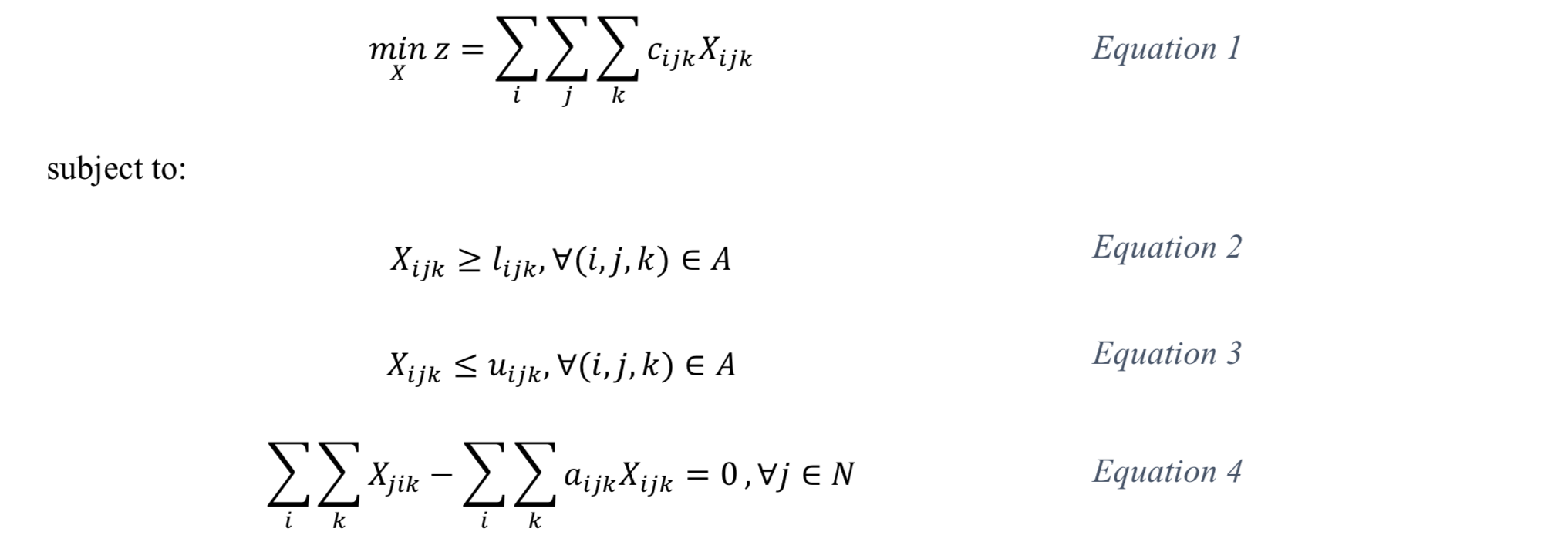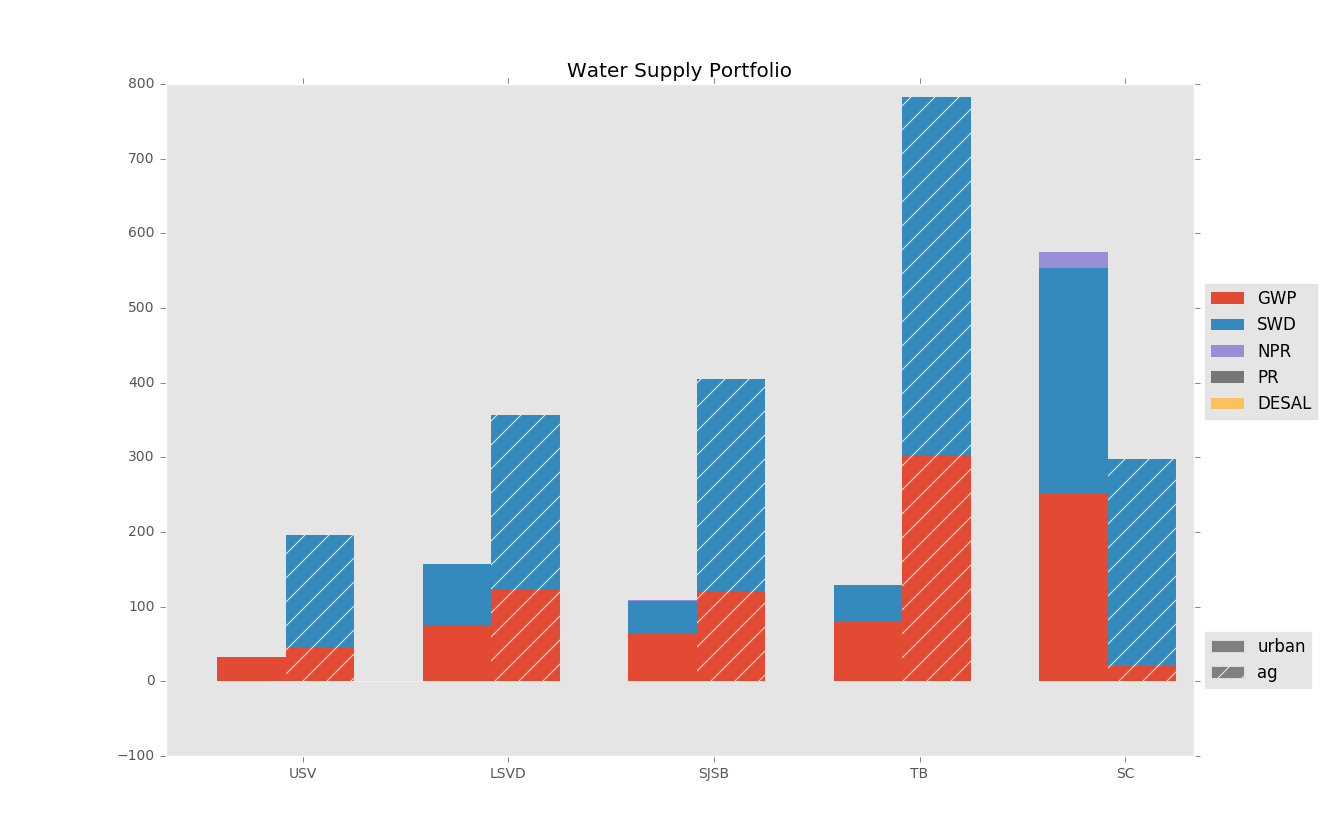CALVIN Network Flow Optimization Model
CALVIN is a network flow optimization model for California’s water supply system, seeking to minimize statewide operating and water scarcity cost, subject to physical and regulatory constraints. CALVIN represents California’s water supply infrastructure including surface and groundwater reservoirs, urban and agricultural demands, environmental flow requirements, hydropower production, wastewater reuse and desalination facilities, plus urban and agricultural water conservation.
Mathematically, CALVIN is a network-flow model over a physical network represented by a set of nodes N and links L. Links are defined by (i, j, k), where i is the origin node (located in time and space), j is the terminal node, and k is piecewise component used to represent nonlinear penalty (or cost) curves with a convex piecewise delineation. Component k represents multiple links from origin node i to terminal node j with monotone increasing unit costs. Each link has a flow X, which is the decision variable; unit cost c; lower bound l; upper bound u; and amplitude or loss factor a. The objective function and constraints are:

Example of water supply portfolio
